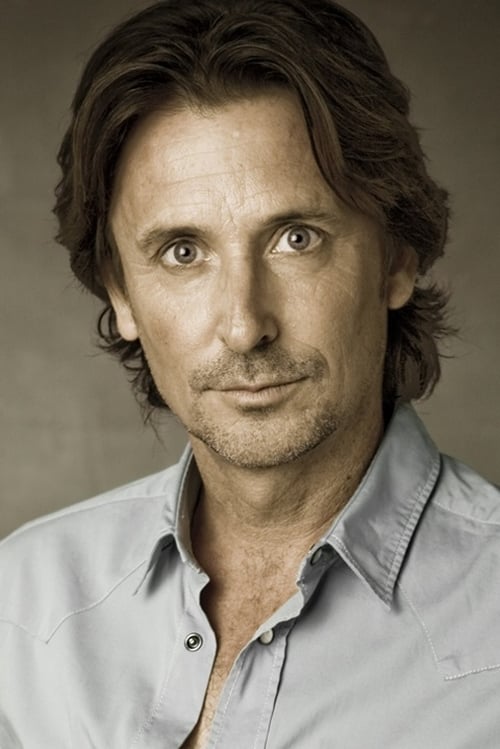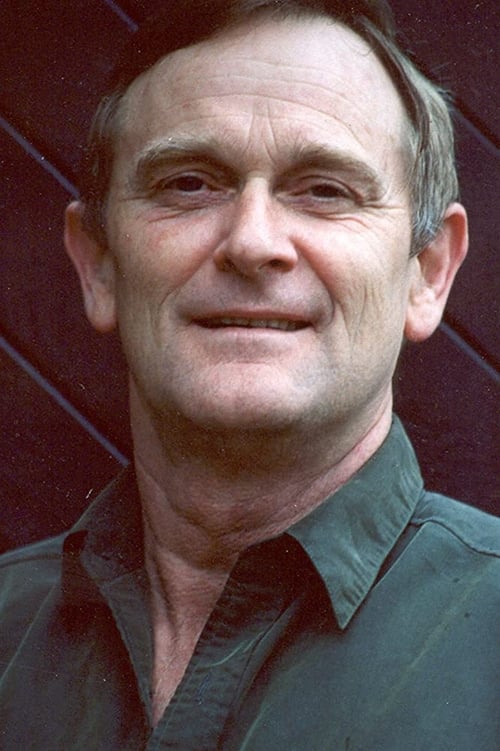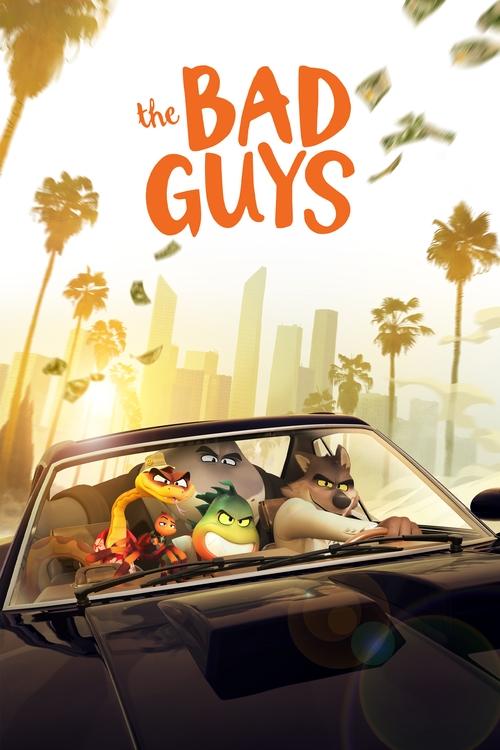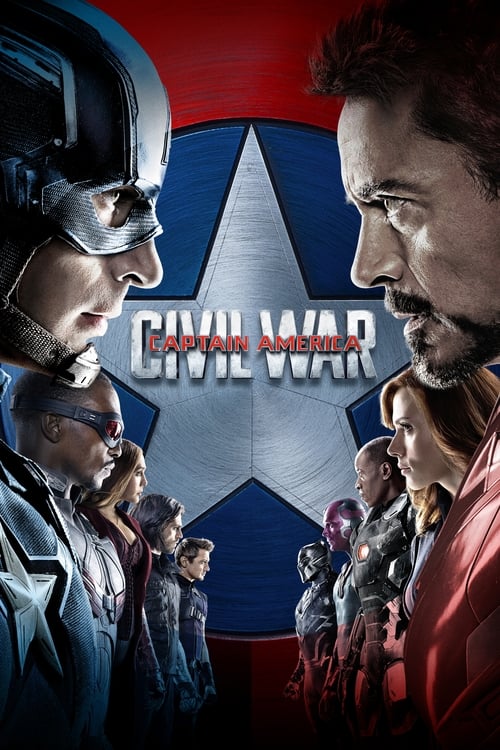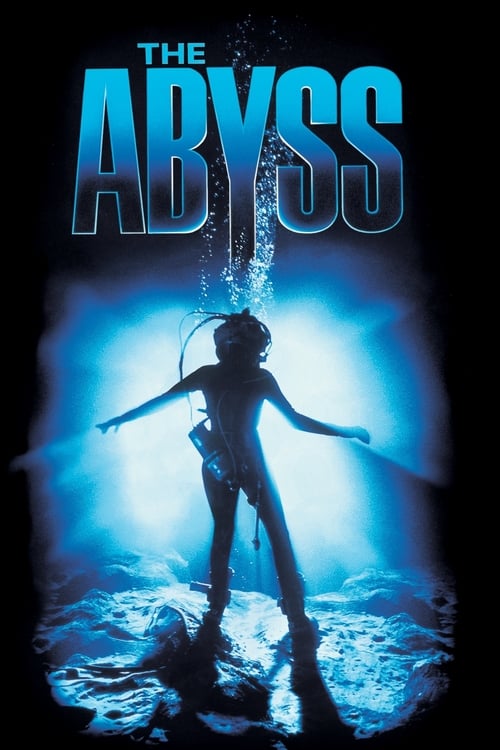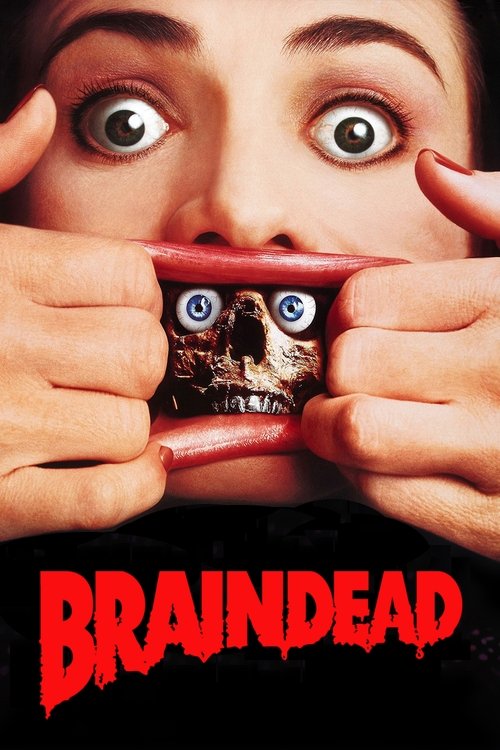
Braindead
When a Sumatran rat-monkey bites Lionel Cosgrove's mother, she's transformed into a zombie and begins killing (and transforming) the entire town while Lionel races to keep things under control.
Dialogues from Movie Braindead
Quotes from Movie Braindead
Sound Tracks from Braindead by Peter Jackson, Philippa Lowthorpe
The Lion Sleeps Tonight
The Lion Sleeps Tonight by The Tokens, During the scene with the zombies in the garden
Ride of the Valkyries
Ride of the Valkyries by Richard Wagner, Heavily featured in the cemetery scene
Download App
Memorable Scenes from Movie Braindead
The Infection Begins
In the early moments of 'Braindead', a group of explorers inadvertently unleash a deadly virus after capturing a rare Sumatran rat-monkey. As the virus begins to spread, the film sets a darkly comedic tone, leading to chaos in the quiet town. This moment is pivotal as it establishes the bizarre yet gruesome premise of the film.
Context: The infection marks the start of an adventure that juxtaposes horror with absurd humor, highlighting the unintended consequences of human curiosity.
Lionel's Struggle with His Mother
Lionel's relationship with his overbearing mother, Vera, is showcased when he tries to live his own life. When Vera becomes infected and starts transforming, Lionel faces the heart-wrenching choice of caring for her versus escaping his suffocating obligation.
Context: This dynamic reflects the heavy theme of familial duty versus personal freedom, setting the stage for Lionel's internal conflict.
The Garden Party Horror
During a seemingly charming garden party, the infected create mayhem. The comedic horror escalates as Lionel’s attempts to manage the chaos tragically collide with the partygoers’ obliviousness, creating a darkly comedic sequence full of gore and absurdity.
Context: This scene illustrates the film's blend of playful humor and shocking gore, encapsulating its uniquely outrageous style.
Vera's Transformation
As Vera becomes a zombie, her grotesque transformation is both horrifying and darkly funny. Lionel’s blend of concern and frustration shows his love for his mother, while the audience grapples with the horror of her change.
Context: This transformation serves as a visual representation of the loss of control that permeates Lionel's life.
The Baby Zombie Scene
In perhaps the most infamous moment, Lionel is forced to care for a baby zombie, which leads to a series of outrageous and shocking events. His desperate attempts to be a good caretaker contrast sharply with the absurdity of tending to a zombie infant.
Context: This moment highlights the film’s absurdity while pushing Lionel deeper into madness, blurring his sense of reality.
The Confrontation with Paquita
Lionel and Paquita share an emotional moment as she learns about his mother’s condition. This discussion is pivotal as it allows both characters to express their feelings amidst the chaos, bringing a rare moment of tenderness to the film.
Context: This scene deepens their relationship and shows Lionel's desire for love despite his horrors, emphasizing the theme of love in a monstrous world.
The Church Massacre
As the infected frenzy escalates, a church gathering turns into a bloodbath. The shocking violence is countered by the absurdity of the setting, creating a bizarre blend of horror and comedy.
Context: This massacre underscores the total breakdown of order and civility in the town, illustrating the film’s critique of societal norms.
Lionel's Desperation
Feeling overwhelmed by the chaos of his life, Lionel steps into a moment of reflection. This scene illustrates his fatigue and determination to reclaim his life, even amidst the absurdity.
Context: It emphasizes his character growth and determination against horrific odds.
The Grand Finale Fight
During the film’s climax, Lionel battles hordes of zombies in a visually spectacular and wildly inventive showdown. The animated sequences paired with over-the-top gore create a thrilling and ridiculous spectacle.
Context: This fight is the culmination of Lionel’s transformation from a timid man into someone who actively confronts the madness around him.
The Emotional Farewell
In a bittersweet ending, Lionel is left to face the consequences of his actions with a heavy heart. His farewell to his mother is laden with emotional weight, showcasing the love-riddled tension of previous scenes.
Context: This farewell encapsulates the themes of loss and responsibility, serving as a touching bookend to the film’s chaos.
The Packaging Scene
In a wild and comedic sequence, Lionel uses an industrial packing machine to deal with the zombies. The contrast of mundane machinery against the backdrop of horror is both absurd and hilarious.
Context: This moment emphasizes how surreal and outrageous 'Braindead' can be, cementing its reputation for pushing boundaries.
The Mysterious Necromancer
The entrance of the supernatural figure further complicates the plot, his motives unclear yet menacing. His presence enhances the sense of mystery and dread, and he serves as a catalyst for Lionel’s final decisions.
Context: This character adds an intriguing layer to the story, representing the unknown forces at play.
The Fight for Survival
Lionel faces off against his mother's zombie form, culminating in a moment of intense personal struggle. This confrontation visually and emotionally encapsulates the themes of duty and desire for freedom.
Context: This struggle represents Lionel’s ultimate confrontation with his past and his need to break free.
The Heartwarming Gesture
In a quiet reprieve from horror, Lionel shares a moment with Paquita that showcases their budding romance amidst the chaos. Their playful banter provides both levity and a moving connection between characters.
Context: Their relationship serves as a humane counterpoint to the surrounding madness, drawing viewers into their emotional depth.
Infected Chaos at the Hospital
In a frenetic and chaotic hospital scene, the absurdity peaks as zombies wreak havoc inside the sterile environment. The contrast of medical seriousness with horror and gore infuses dark comedy into the mix.
Context: This moment emphasizes the absurdity of control and safety in life when facing unintended crises.
The Final Showdown
The climax features an epic face-off between Lionel and the full force of the zombie outbreak. The stunning visuals and choreographed action highlight the absurdity of the situation.
Context: This moment signifies Lionel's acceptance of his fate and commitment to fight for his love and survival.
Embracing the Absurdity
Lionel finally embraces the madness, showing a profound change in his character. His acceptance of the insane circumstances reflects personal growth and determination.
Context: This moment highlights the theme of adapting to chaos, proving that even in bizarre situations, resilience shines through.
The Dawn of a New Day
As the film comes to a close, Lionel stands amidst the aftermath, symbolizing both victory and loss. The sunrise in the backdrop offers a glimmer of hope after the chaos.
Context: This ending resonates with the theme of rebirth, showcasing how even the worst circumstances can lead to new beginnings.
The Living Dead Tango
A light-hearted tango scene features Lionel and a group of zombies in a bizarre yet charming dance together, showcasing the film's eccentric humor.
Context: This moment represents the film's unique approach to blending horror and comedy, leaving audiences with laughter amidst the madness.
The Final Conclusion
In a final twist of humor, the movie ends with a ridiculous and unexpected resolution that leaves viewers laughing and shaking their heads in disbelief.
Context: This wrap-up encapsulates the overall absurd message of facing the chaos of life with humor and resilience.
Download App


